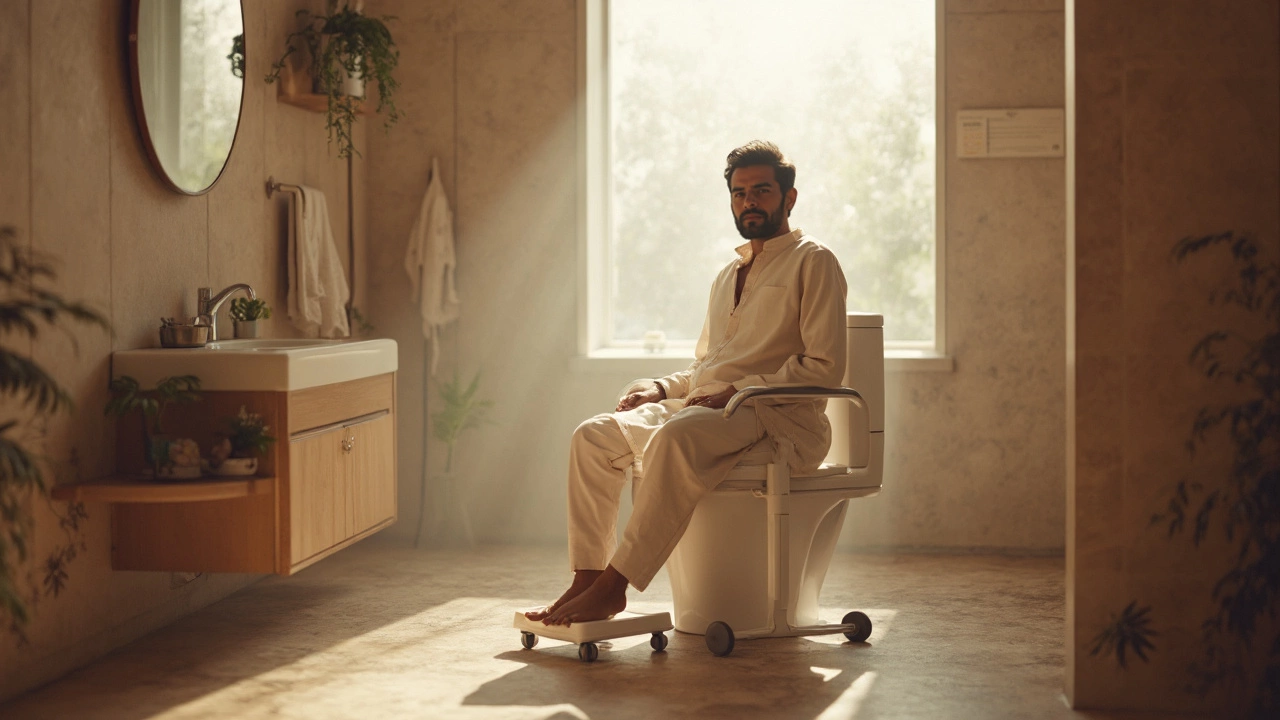Post-Surgery Toilet Use: What You Need to Know for Safe Recovery
When you’re recovering from surgery, even something as simple as using the toilet can become a challenge. Post-surgery toilet use, the process of safely accessing and using the bathroom after a medical procedure. Also known as postoperative bathroom mobility, it’s not just about convenience—it’s a critical part of preventing falls, infections, and delays in healing. After procedures like hip replacement, heart surgery, or abdominal operations, your body is fragile. Standing up, sitting down, or even leaning forward can put stress on healing tissues. Many people don’t realize how much strain a regular toilet can place on incisions, joints, or stitches—until they’re in pain trying to get up.
That’s why bathroom safety after surgery, a set of practices and tools designed to reduce physical risk during daily activities post-operation matters more than you think. Simple things like a raised toilet seat, grab bars, or a commode chair aren’t luxuries—they’re medical necessities. Studies show that falls in the bathroom are one of the top causes of readmission after surgery. And it’s not just about strength. Pain, dizziness from medication, swelling, and reduced mobility all combine to make the toilet a high-risk zone. For older adults or those with limited mobility, this becomes even more urgent. Using the wrong technique can reopen wounds, displace surgical hardware, or trigger dangerous blood pressure drops.
Recovery isn’t just about what happens in the hospital. It’s what you do at home—especially in the bathroom. That’s why so many of the posts here focus on practical recovery steps: from postoperative care, the ongoing medical and self-care routines needed after leaving the hospital like wound cleaning and medication timing, to managing discomfort while sitting or standing. You’ll find guides on setting up a safe recovery space, choosing the right equipment, and avoiding common mistakes like holding your breath when pushing (which can spike blood pressure). Some people think they can tough it out, but that’s how complications start. The right support makes recovery faster, less painful, and far safer.
What you’ll find below are real, actionable posts from people who’ve been through this—whether it’s how to use a bedside commode after heart surgery, why you shouldn’t rush to flush, or what to do if you’re too weak to lift yourself. These aren’t theoretical tips. They’re lessons learned from hospital discharge planners, physical therapists, and patients who got it right—and those who didn’t. Whether you’re recovering from a minor procedure or major surgery, the advice here will help you protect your body while you heal.
Navigating Toilet Use After Knee Surgery: Essential Tips
Recovering from knee surgery requires attention to everyday activities, including using the toilet. Safety and comfort can be challenging without proper support and tools. This article delves into the tricks of navigating bathroom visits post-surgery, from helpful aids to maintaining balance. It's all about making this phase of recovery as smooth and comfortable as possible.
read more
